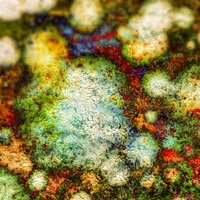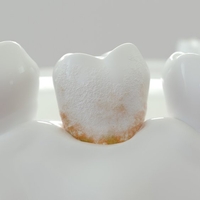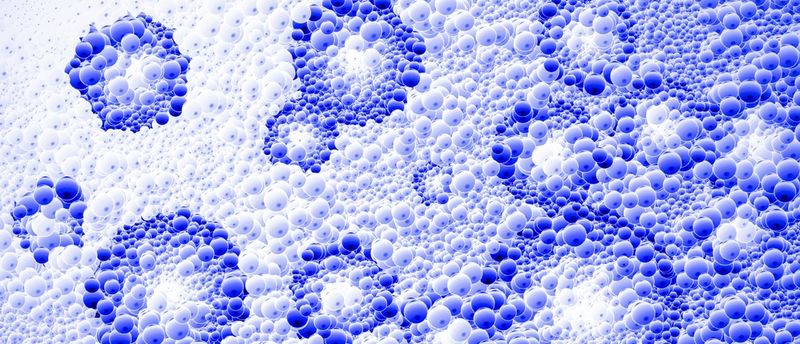
Lipid and/or phospholipid-based carrier systems are among the most promising encapsulation technologies employed in the fast-growing field of nanotechnology.
The potential health benefits of many nutraceuticals and dietary supplements are not fully realised because they are subject to degradation from exposure to environmental factors such as humidity, oxygen, heat, light and extreme pH values during storage or within the gastrointestinal tract. Systemic delivery of macromolecules is also limited by rapid blood clearance and inadequate uptake by cells (1,2).
Encapsulation technology can be employed to protect the chemical structure and function of nutraceuticals and supplements, and to increase the bioavailability and shelf life of the product. Liposomes have been explored in pharmaceutical research as drug delivery systems for over 50 years. They are one of the most applied and investigated encapsulation and controlled release technologies for bioactive compounds used in the formulation of many pharmaceutical, cosmetic, nutraceutical, agricultural and food products (1,3,4).
Nanoparticles as drug carriers
Nanotechnology is the science and technology of precise manipulation in the materials, devices or systems at nanometre scale (usually less than 100nm) (5). Nanodrug systems (nanocarriers) are prepared from a range of inorganic and organic compounds including polymers, lipids, dendrimers, carbon nanotubes, quantum dots, micelles and mesoporous materials (5,6). They are used to improve the efficacy, safety, physicochemical properties and pharmacokinetic/pharmacodynamic profile of therapeutic substances.
Nanocarriers can offer several pharmacokinetic advantages, including (4–7):
- Precise release and site-specific targeted therapeutic compound delivery
- Higher metabolic stability
- Higher membrane permeability
- Improved bioavailability
- Enhanced circulation and half-life of therapeutics
- Increased cellular uptake and the release of intact macromolecules into the cell
- Improved delivery of drugs which are poorly soluble in water
- Increased protection for sensitive drug materials
Liposomes
Liposomes are one of the lipid-based nanoencapsulation technologies used to improve drug delivery (Table 1).
Table 1. Lipid-based nanotechnology encapsulation technologies (1)
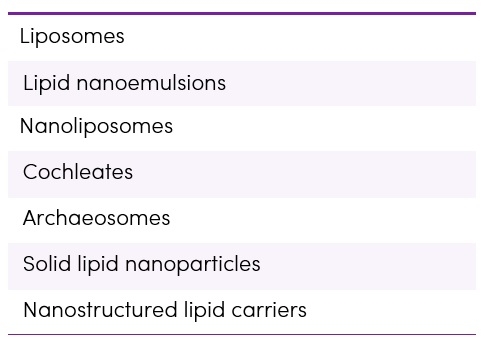
Liposomes (or lipid vesicles) are microscopic phospholipid bilayer vesicles consisting of a phospholipid bilayer shell with an aqueous internal core (3). Phospholipids are water-insoluble, and therefore able to deliver the drug or nutrient straight into the bloodstream and then to the targeted cells. By altering their size, affinity, and surface chemistry, the rates of biodegradation, bioavailability, and release of the therapeutics at target tissues can be customized (8).
Figure 1. Design of a liposome for nutrient delivery (9)
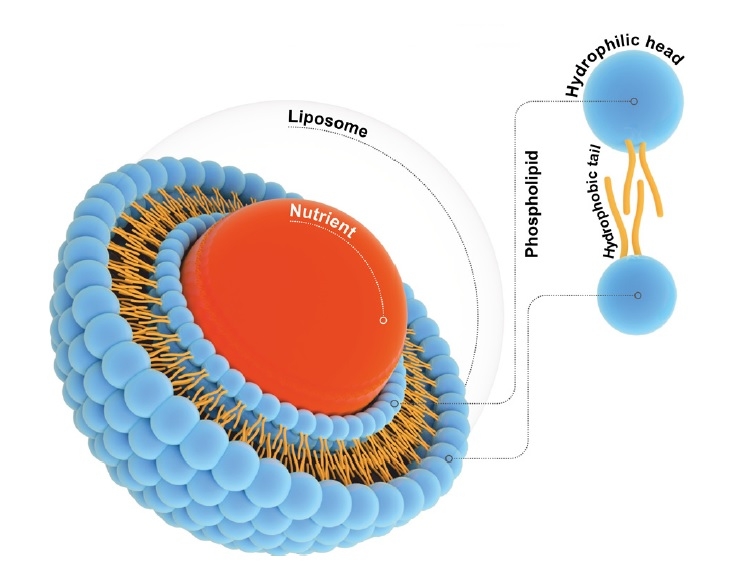
There are four key types of liposomal delivery systems (Figure 2) (11):
- Conventional liposomes consist of a lipid bilayer composed of phospholipids and cholesterol, which encloses an aqueous core. Both the lipid bilayer and the aqueous space can incorporate hydrophobic or hydrophilic compounds, respectively
- PEGylated liposomes have the addition of a hydrophilic polymer surface coating of polyethylene glycol (PEG) (7,11)
- Ligand-targeted liposomes have ligands (e.g. antibodies, peptides/proteins and carbohydrates) attached to the surface or to the terminal end of the attached PEG chains and are used for specific targeting of therapeutic compounds to designated cell types or organs which selectively express or over-express specific ligands at the site of disease
- Theranostic liposomes are a single system consisting of a nanoparticle, a targeting element, an imaging component and a therapeutic component
Figure 2. Different types of liposomal drug delivery systems (11) CC BY
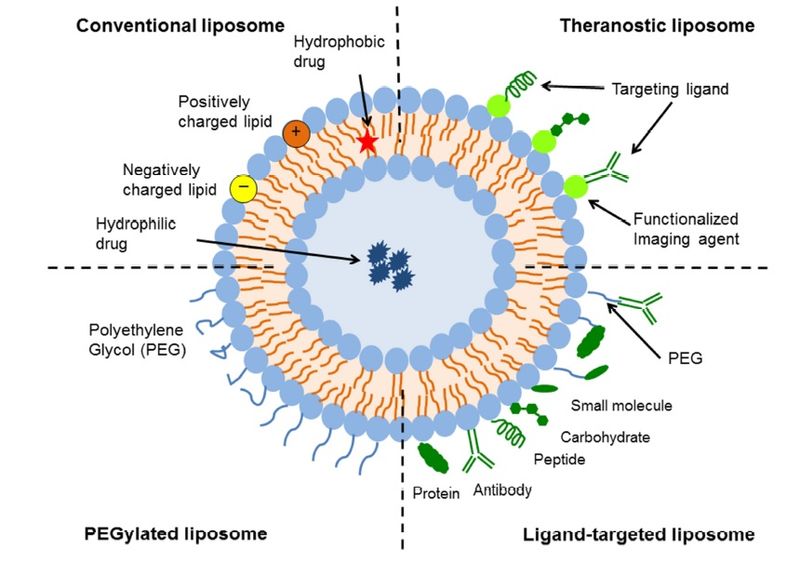
Table 2. Benefits and limitations of liposomal nanocarriers (1,5,7,12–16)
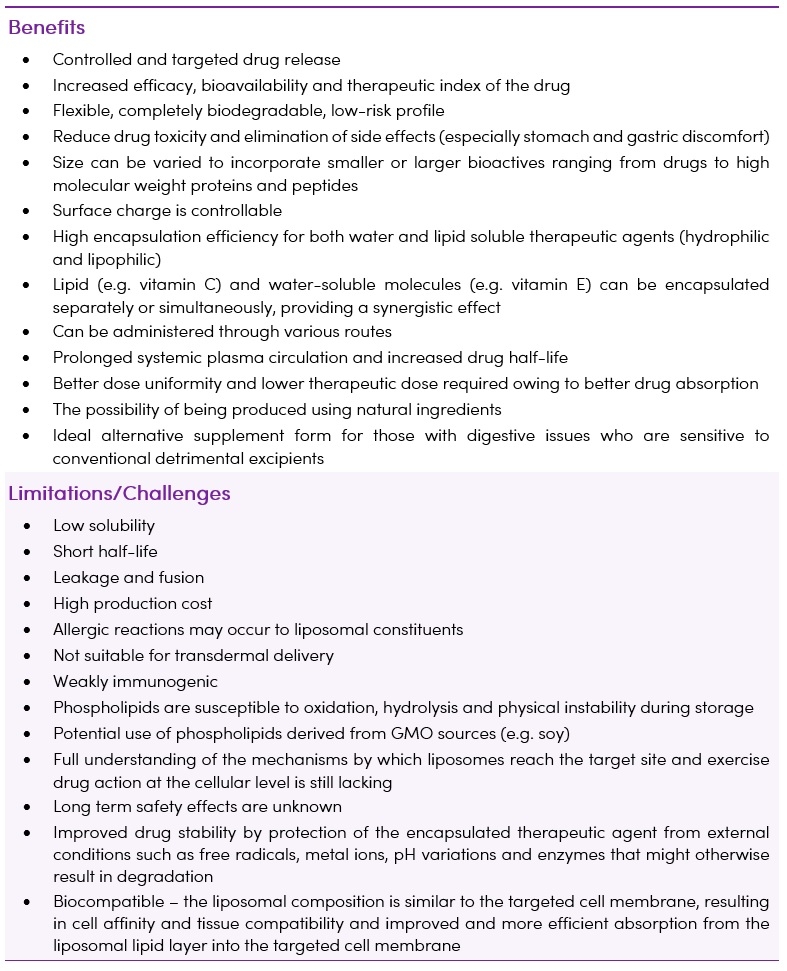
Liposomes and nanoliposomes are not merely inert capsules for the protection and delivery of the material they carry, but they may impart considerable health benefits to consumers (1) (Table 3).
Table 3. Health benefits of liposome/nanoliposome constituents (1)
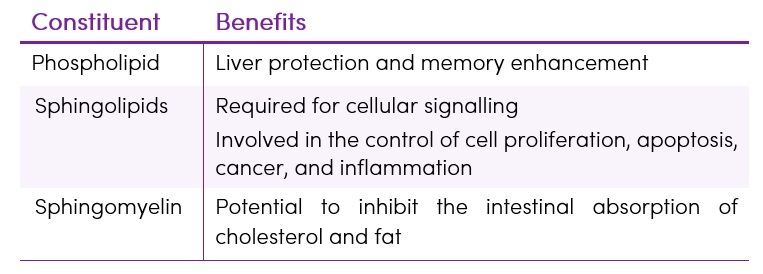
As a drug delivery platform, liposomes remain extensively used and offer a dynamic and adaptable technology for enhancing the systemic efficacy of therapeutics (11,17).
Nanoliposomes
Based on the successful applications of liposomes in biomedical and pharmaceutical industries, nanoliposomes are now being investigated as some of the most promising lipid-based carriers for the encapsulation and controlled-delivery of nutraceuticals and functional food constituents such as antioxidants, proteins, polysaccharides, enzymes, vitamins and essential fatty acids (1).
Nanoliposomes, or nanoscale versions of liposomes, generate considerably more surface areas which require an increased amount of energy input to be generated (18).
Advantages offered by nanoliposome technology include (1,19):
- Protection of sensitive bioactive molecules
- Storage stability
- High loading capacity
- Enhanced bioavailability
- Sustained-release mechanism
- Can be manufactured by using safe ingredients obtained from natural sources, such as egg, soy, or milk
- Can encapsulate and transport more than one bioactive agent, providing a synergistic effect
Table 4. Advantages of using nanoliposomes in nutraceuticals (1).
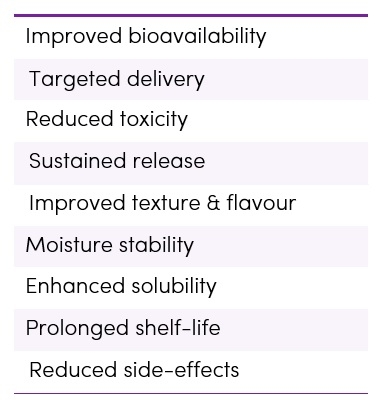
Cautions/Contraindications
Liposomes are generally considered to be pharmacologically inactive (and may even impart health benefits as and of themselves) with minimal toxicity, as they tend to be composed of natural phospholipids, however liposomes may not be as immunologically inert as once thought (1,7,11).
The reticuloendothelial system (RES) is the main site of liposome accumulation following their systemic administration. The liver exhibits the largest capacity for liposomal uptake followed by the spleen, which can accumulate liposomes up to 10 times higher than other RES organs, which include kidney, lungs, bone marrow and lymph nodes (11).
The cells of the RES are also part of the innate immune system, therefore the question of whether macrophage saturation by liposomes can lead to immunosuppression and increase the risk of infections is raised. Excessive liposome deposition in macrophages may impair their phagocytic capacity or modulate other cellular functions. To date, there have been no reports of clinically significant immune suppression at therapeutic doses of noncytotoxic liposomes (11). Noncytotocix liposomes are used in neutraceuticals, compared to anti-cancer liposomes that contain cytotoxic drugs which are capable of inducing macrophage destruction. Liposomes have been exhaustively exploited for the delivery of chemotherapeutic agents for cancer treatment by increasing their concentration in the tumour cell.
PEGylation of liposomes creates a local surface concentration of highly hydrated groups which reduces liposomal uptake by the macrophages of the RES and is the key strategy for improving circulation times and preventing removal by the RES. The use of PEG significantly reduces, but does not completely circumvent liposomal uptake by the RES (11).
Takeaway on Liposomal Technology
- Liposomal micro-spheres are used to create a microscopic bubble that surrounds a drug or supplement within a protective shell improving its stability, bioavailability and absorption profile
- Liposome-encapsulated technology can better target the delivery of drugs to specific organs and areas of the body
- Liposomes are generally considered non-toxic and are made of phospholipids which occur naturally in the body

